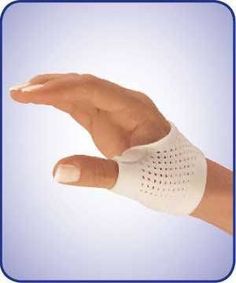How to Wrap a Sprained Thumb

A sprained thumb can be quite painful and inconvenient, impacting your ability to perform daily tasks. It is crucial to treat the injury correctly and provide proper support for your thumb as it heals. One effective way to support a sprained thumb is by using a wrap or bandage. In this article, we will outline the steps to properly wrap a sprained thumb for optimal support and recovery.
1. Gather your materials: For this procedure, you will need a roll of medical tape or a self-adhesive elastic bandage, such as an ACE wrap. You may also want a pair of scissors nearby to trim the bandage if needed.
2. Wash your hands: To prevent introducing bacteria into the injured area, make sure you wash your hands thoroughly before touching the thumb or bandage.
3. Trim any excess hair: If you have long hair on the area surrounding your thumb, trim it slightly to ensure that the tape or bandage adheres well and does not cause additional discomfort.
4. Position your hand: Place your hand palm-down on a flat surface with your fingers extended.
5. Support the thumb: Wrap one finger of your other hand around the injured thumb’s base so that it is securely in place.
6. Begin wrapping: Start by wrapping the tape or bandage around the base of the thumbnail (above the knuckle) two or three times, creating a secure anchor point.
7. Spiral down towards the wrist: Gradually wind the tape diagonally down towards your wrist while making sure that each layer overlaps slightly with the previous one.
8. Create a loop around your wrist: Once you reach your wrist, create a loop by wrapping around it once before moving back up towards your thumb.
9. Return to base of thumbnail: Now, wrap diagonally back up towards the original anchor point near the thumbnail.
10. Secure the bandage: Finish by wrapping the tape or bandage several times around the anchor point to secure it in place. Ensure that it feels snug but not too tight, as excessive pressure can cut off blood circulation and hinder the healing process.
11. Trim off any excess: Use scissors to cut off any excess tape or bandage, being careful not to cut your skin.
12. Test your movement: Gently move your thumb to evaluate whether you have adequate support and ensure that you have not applied the bandage too tightly. You should be able to move slightly, but the motion should be limited to promote healing.
Remember, wrapping a sprained thumb is only one part of the recovery process, and consulting a healthcare professional for proper diagnosis and treatment is essential. Follow their advice regarding rest, ice, compression, and elevation (RICE) to successfully manage your injury and get back to full functionality as quickly as possible.






